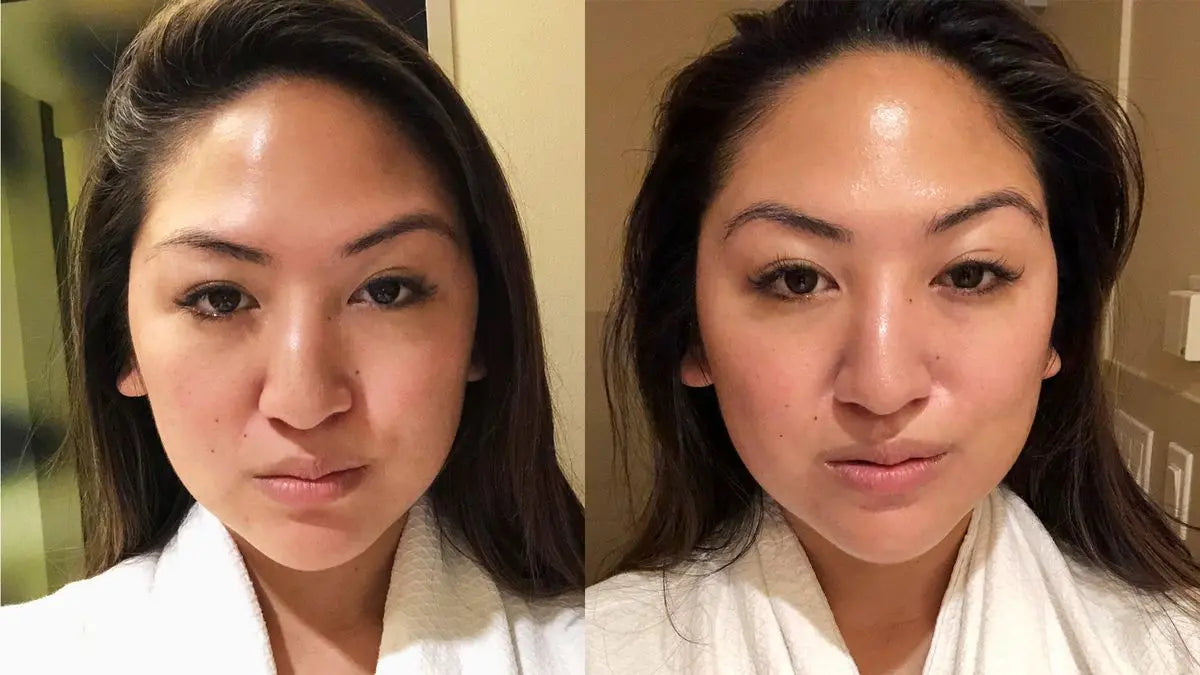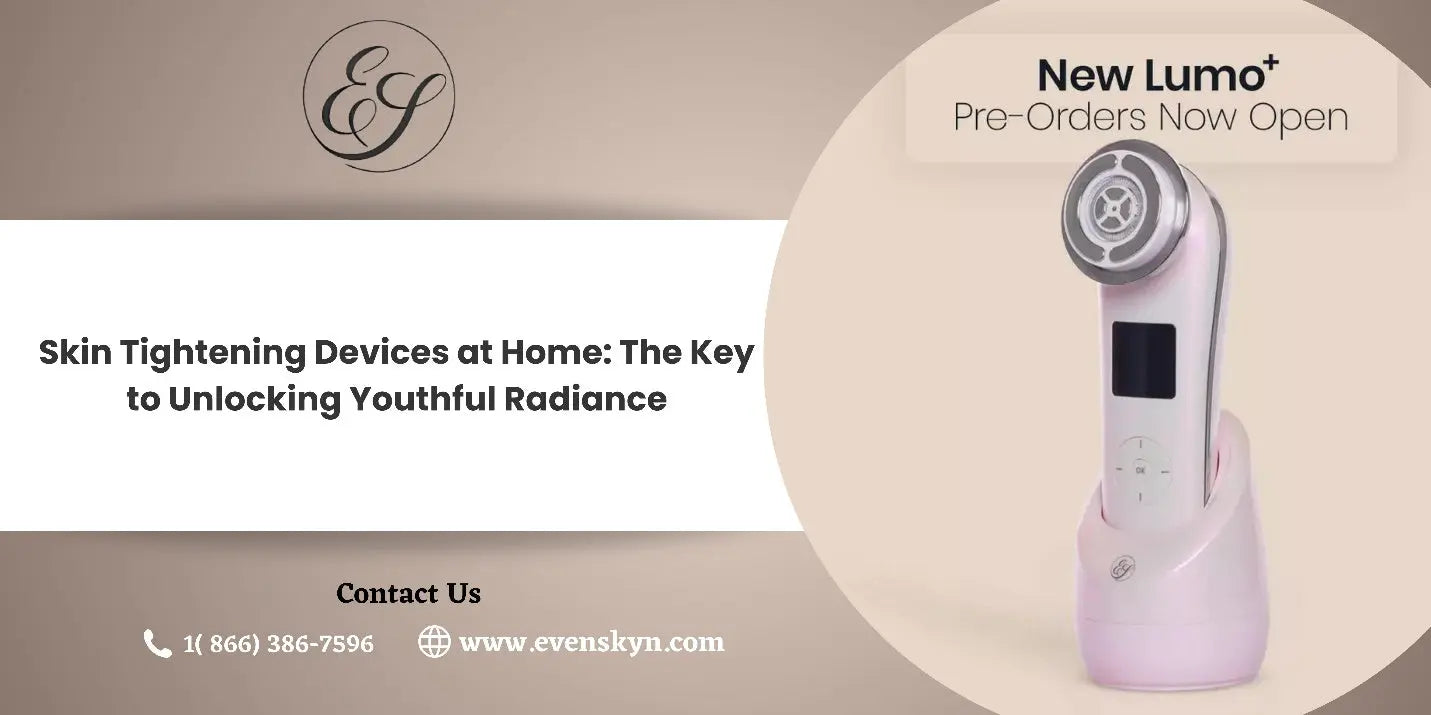Medically Reviewed by Dr. Lisa Hartford, MD
Human skin repairs itself with several functions in place, such as keratinocytes for wound healing and fibroblasts for collagen regeneration. Without these functions, the skin will not be able to heal, repair, and regenerate.
Although these functions are taking place constantly in the skin, they may slow down due to aging, genetics, and environmental factors. Fortunately, science has progressed and studied different options to stimulate fibroblast and keratinocyte activity. One such effective method is the use of microcurrent therapy. Keep reading to learn more about the cellular effects of microcurrent on skin health.
Understanding the Role of Fibroblasts in Skin Health
Fibroblasts are the cells that are present in the dermis that help in the formation of connective tissues. The fibrous connective tissue formed offers structure, support, and connection to organs in the body. In addition, fibroblasts help in secreting the collagen protein, which is essential for the skin's structure and strength.
Fibroblasts have evolved to regulate their synthesis of collagen and other extracellular matrix proteins when there is mechanical tension. Increased mechanical tension stretches fibroblasts, which coordinately increases collagen production and decreases collagenase production.

As we know, collagen is an essential protein that keeps the skin tight and healthy. Fibroblasts have the important function of creating a collagen matrix throughout the dermis. They contain surface receptors known as integrins that get attached to the type I collagen matrix. Moreover, they organize the collagen in the epidermis, dermis, and subcutaneous tissue.
What triggers fibroblasts to create an extracellular collagen matrix? The mechanical tension in the cells stretches the fibroblasts, hence resulting in more collagen formation. Therefore, massaging the skin or using microcurrent may also generate collagen.
We can summarize fibroblast functions as follows:
- Mesenchymal lineages include extracellular matrix (ECM) secretion and remodeling
- Secretion of signaling factors for surrounding cells
- Mechanical force generation
- Regulation of tissue metabolism and metabolite secretion
- Collagen formation
Importance of Keratinocytes for Skin Cells
Keratinocytes are the cells present in the epidermis. Here are some important functions of keratinocytes in the skin:
Wound healing
Keratinocytes are significant in the re-epithelialization of the skin at the wound site. The cells migrate, proliferate, and differentiate on the wound to restore the epidermal barrier. Moreover, keratinocytes express various immune genes which are activated by the injury.
The function is carried out via crosstalk between the immune cells and proteins secreted, including cytokines and chemokines. This helps in prompt wound healing.
Protection
Keratinocytes are essential to create a skin barrier that ensures protection from the outside environment. Along with keratinocytes, the outer protective layer of the epidermis protects the skin from UV, pollution, and bacteria damage.
Keratinocytes are also the primary defense system of the epidermis at the time of impact. Besides, keratinocytes keep the skin hydrated, keeping the water, solute, and heat loss to a minimum. Overall, they also help in maintaining structural protection in the skin.
Antimicrobial and anti-inflammatory
During wound healing, keratinocytes recognize any pathogens and bacteria. They are able to identify pathogen-associated molecular patterns (PAMPs). As a result of this, keratinocytes produce signal pathways for chemokines and cytokines. This activates the immune cells at the wound site and ensures no infection occurs during the healing stage.
How Does Microcurrent Impact at the Cellular Level
Now we know the cellular functions of fibroblasts and keratinocytes for skin health. Let's explore how microcurrent stimulates fibroblast and keratinocyte activity. As per the research, microcurrent is able to promote wound healing by increasing blood circulation in the inflamed area.
This has helped in developing microcurrent bandages for patients with skin wounds. In a study, it was concluded that microcurrent defends against foreign bodies and pathogens. The microcurrent wound dressings replicate healing characteristics that assist in the proliferation, repair, and migration of fibroblasts and keratinocytes.

Apart from healing the wound, it also helps in minimizing the appearance of scars. Another study concluded microcurrent triggers MAPK signaling and TGF-β1 release in fibroblast and osteoblast-like cell lines. This works to regulate diverse cellular programs by increasing extracellular signals to intracellular responses.
Microcurrent uses low-level electrical currents to stimulate tissues and cells in the body. Usually, a small charge of some microampere is used to generate cellular reactions. Here's how microcurrent can affect cells at the cellular level:
Promoting Cell Communication
Microcurrents have the potential to enhance communication between cells, allowing ions to flow more smoothly and improving the exchange of signaling molecules. This, in turn, supports the repair and regeneration of cells.
Boosting ATP Production in Skin Cells
Microcurrent therapy can stimulate the production of adenosine triphosphate (ATP) within skin cells. ATP serves as the first energy source for various cellular functions, and increased ATP levels can enhance cell metabolism and overall cellular health.
Enhancing Collagen Protein Synthesis
The synthesis of proteins generated by microcurrents can be advantageous for repairing damaged tissues and encouraging the generation of collagen protein and elastin in the skin.
Improving Membrane Permeability
This therapy may enhance the absorption of nutrients and oxygen by increasing the permeability of cell membranes. Consequently, cells may find it easier to eliminate waste products from their surroundings.
Reducing Inflammation
One of the notable benefits of microcurrent therapy lies in its anti-inflammatory effects at the cellular level. It possesses the capacity to modulate the activity of inflammatory mediators.
Supporting Cell Migration and Proliferation
Microcurrents can stimulate cell migration, which has a crucial role in skin tissue repair and wound healing. They have the ability to attract cells to the site of injury or tissue damage.
Facilitating Neurotransmitter Release
In certain cases, when applied to neurons, microcurrents can influence the release of neurotransmitters, impacting cellular communication in the nervous system.
Microcurrent for Wound Repair and Skin Healing
In a recent study, microcurrent was studied for its anti-inflammatory effects. Twenty-two subjects were subjected to ultraviolet irradiation to induce inflammation in two areas of the lumbar region. They were given a microcurrent of intensity of 50 μA in one region.
After the treatment, the wounds were compared for the efficacy of microcurrent. The wound with microcurrent application healed faster. Electrical stimulation also has antibacterial effects as it reduces inflammation.
This is due to the gram-negative and gram-positive microbes being attracted by the positive polarity of the electrical field. As a result, this phenomenon is in support of keratinocyte activity. Overall, microcurrent triggers an anti-inflammatory response and enhances wound recovery.
At-home microcurrent therapy for skin rejuvenation
We recommend using the EvenSkyn Phoenix Face Lifting Microcurrent Bar for total facial rejuvenation. It has a durable construction with 4 deep-kneading massaging rollers, which are made from sturdy alloy metal. These rollers are placed at a 115-degree angle to have maximum contact with the skin.

The bar uses artificial/solar light to generate an effective current of 15uA. So you don't have to go through the hassle of charging it. The bar is ideal to treat the forehead, jawlines, cheeks, and necks. You may use the roller on your face and neck to treat microcurrent vibrations. Since the device works at a cellular level, continuous use is recommended.
Treat an area for 15 minutes to see the best result. When used alone, the device is safe to use every day, while you may use it thrice a week when using radiofrequency or LED therapy. Over time, microcurrent facial may help in stimulating collagen, tightness, and laxity in the skin.
In Conclusion
Fibroblasts and keratinocytes are essential components of skin repair and regeneration. We cannot ignore the cellular aspect of skin repair and continue treating it at the surface level. Therefore, to achieve flawless skin, the approach needs to change.
Stimulating skin cells using targeted therapies is the way to go when dealing with skin inflammation and aging signs such as pigmentation, wrinkles, and fine lines. Microcurrent is one such promising therapy that supports collagen, elastin, and skin healing.
References:
- Yu C, Hu ZQ, Peng RY. "Effects and mechanisms of a microcurrent dressing on skin wound healing: a review." Mil Med Res. 2014 Nov
- Evangelia Konstantinou, Zoi Zagoriti. "Microcurrent Stimulation Triggers MAPK Signaling and TGF-β1 Release in Fibroblast and Osteoblast-Like Cell Lines." August 2020
- Yu C, Hu ZQ, Peng RY. "Effects and mechanisms of a microcurrent dressing on skin wound healing: a review. Mil Med Res.” 2014 Nov
- Plikus MV, Wang X, Sinha S, Forte E, Thompson SM, Herzog EL, Driskell RR, Rosenthal N, Biernaskie J, Horsley V. "Fibroblasts: Origins, definitions, and functions in health and disease. Cell." 2021 July
- Holzer AM, Granstein RD. "Role of extracellular adenosine triphosphate in human skin. J Cutan Med Surg." 2004 Mar-Apr
- Lawson D, Lee KH, Kang HB, Yang N, Llewellyn T, Takamatsu S." efficacy of microcurrent therapy for the treatment of acute knee pain: A randomized double-blinded controlled clinical trial. Clin Rehabil." 2021 March
- Fatemeh Saniee, Hamid Reza. "Consider of Micro-Current's effect to variation of Facial Wrinkle trend, Randomized Clinical Trial Study."
- Al-Atif H. "Collagen Supplements for Aging and Wrinkles: A Paradigm Shift in the Fields of Dermatology and Cosmetics." Dermatol Pract Concept. 2022 Jan 1









Leave a comment
All comments are moderated before being published.
This site is protected by hCaptcha and the hCaptcha Privacy Policy and Terms of Service apply.